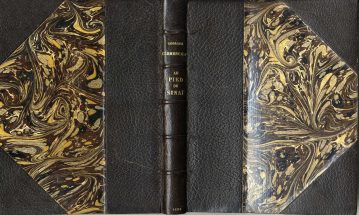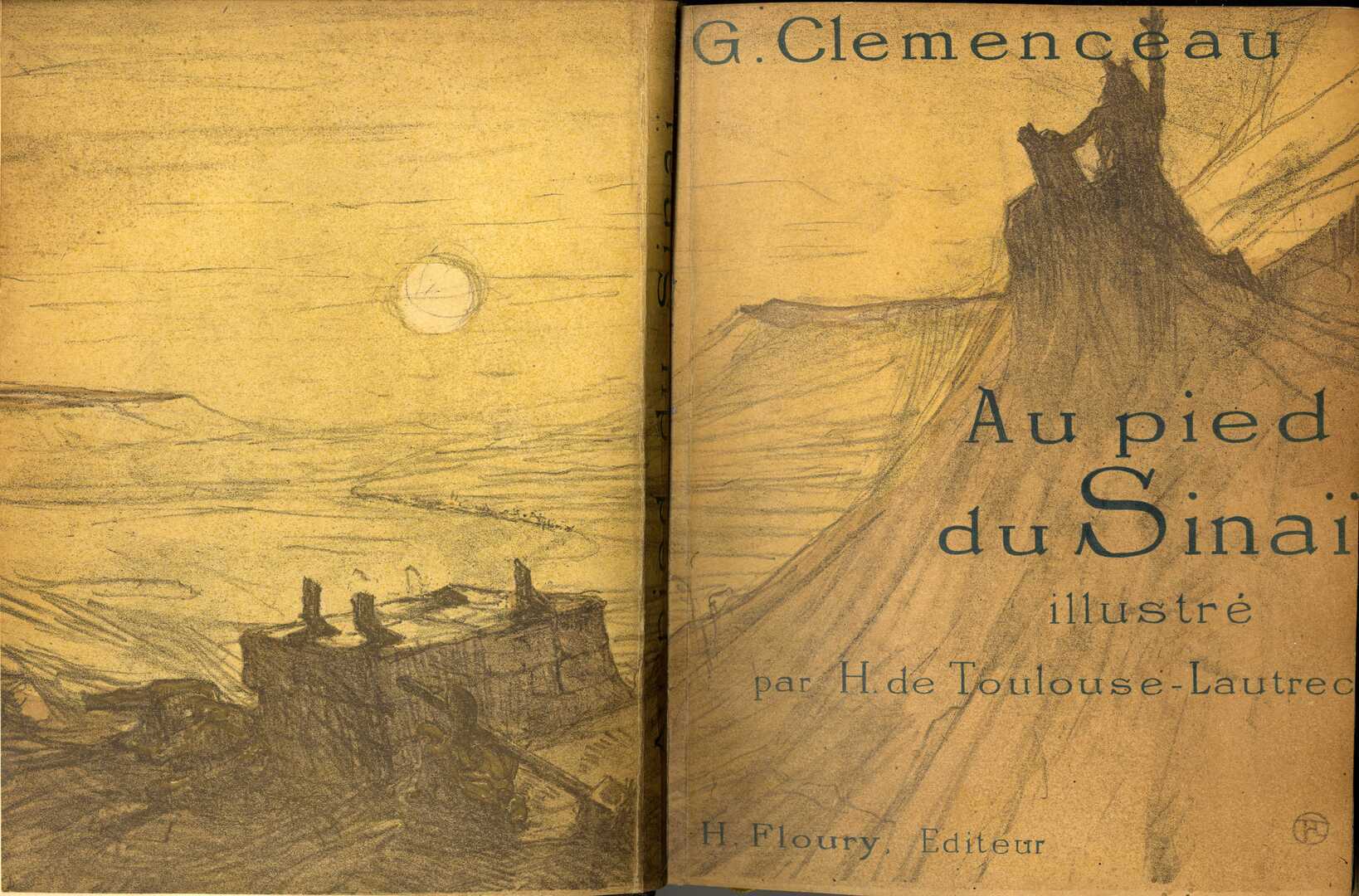Au Pied du Sinai.
Toulouse-Lautrec & Georges Clemenceau.
Synopsis
RARE LIMITED EDITION & NUMBERED EDITION to 380 deluxe copies of which this copy is numbered 66.
First edition of the text by Georges Clemenceau about the condition of Jews in Poland. Illustrated with 10 lithographs by Toulouse-Lautrec, this is copy number 66 of the 380 copies printed on fine Arches paper with two suites of the lithographs (on Chine paper and on “velin”).
“A shrewd observer of his subjects, Lautrec spent hours in the Tournelle quarter of Paris sketching poor Russian and Polish Jews. The author and Statesman Clémenceau appears twice: seated in the office of the oculist Mayer and talking to two bearded men at Busk”. (Garvey)
“Nicknamed ‘the Tiger’ due to his steadfast, and often ruthless, political brilliance, Georges Clemenceau was an esteemed French statesman and journalist. He was a key protagonist in the French Third Republic and was twice the Prime Minister of France – between 1906 and 1909, and between 1917 and 1920 when he lead France in the final years of World War I. As Prime Minister, Clemenceau played a central role in drafting the postwar Treaty of Versailles. He was an intellectual, highly articulate and widely cultured, who mixed in both literary and artistic circles and counted amongst his friends a number of Impressionist artists, including Claude Monet.
During the 1890s Clemenceau focused his efforts on journalism and established himself as one of the leading political writers of the time. In 1898 he became entangled in the Dreyfus Affair – a scandal that divided France along religious, political and cultural lines for many years. In 1894 the Jewish officer Alfred Dreyfus was charged with treason after it was alleged that he had provided to a German attaché documents detailing new designs for French artillery. Dreyfus was convicted and incarcerated on Devil’s Island in French Guiana, where he served twelve years in prison before being exonerated.
Georges Clemenceau’s book, Au pied du Sinaï [At the foot of Sinai] is a collection of stories that details the history and lives of the Jewish people. Although not directly associated with the Dreyfus affair, “Au pied du Sinaï” deals with a politically charged subject and, thus, takes on a pointed sociological meaning in light of the ongoing campaign. Lautrec designed the cover and produced 13 full page illustrations to accompany Clemenceau’s text, in a gesture that showed his support for the cause.
Bibliographic references: Carteret Illustrés IV, 196; Garvey 302.








